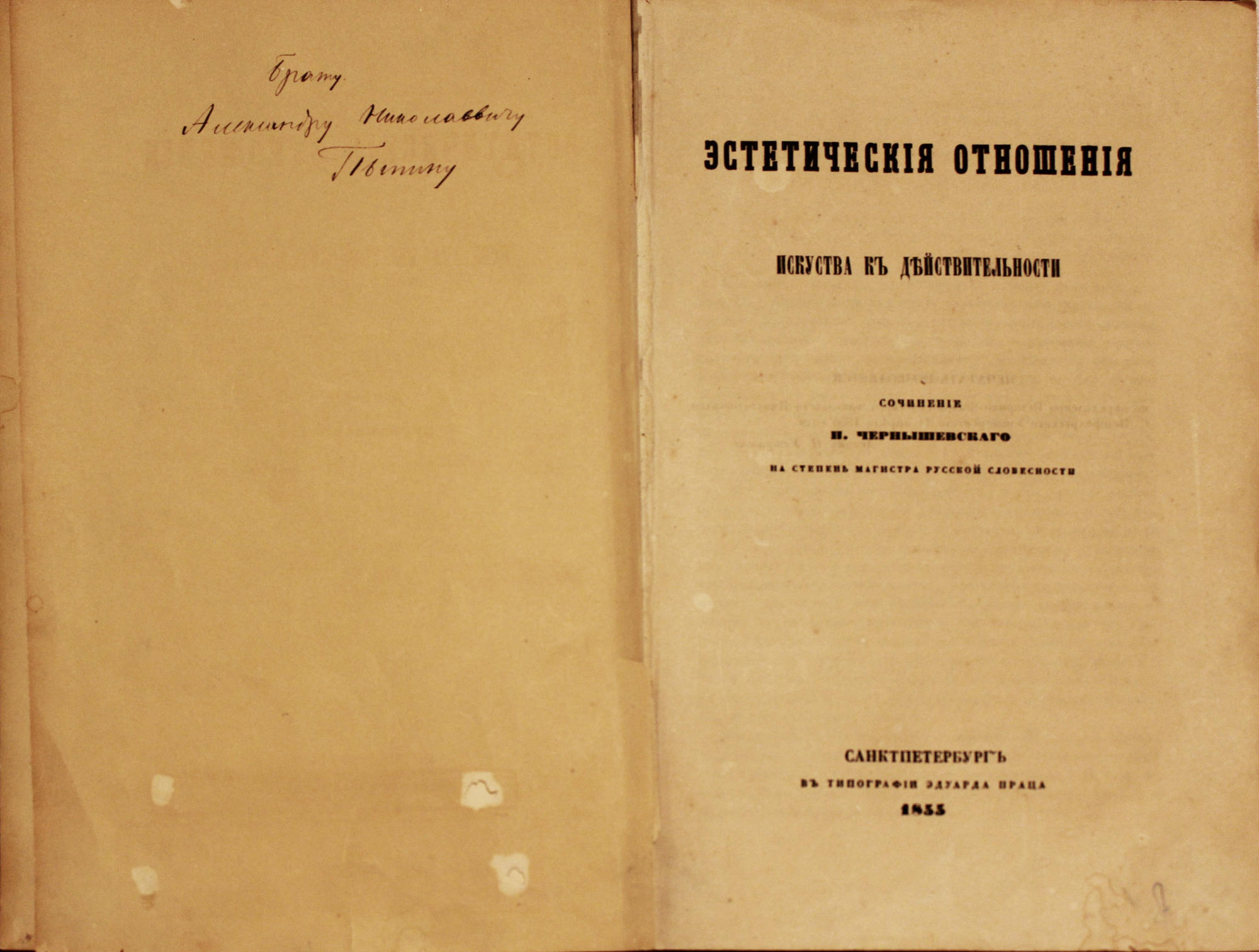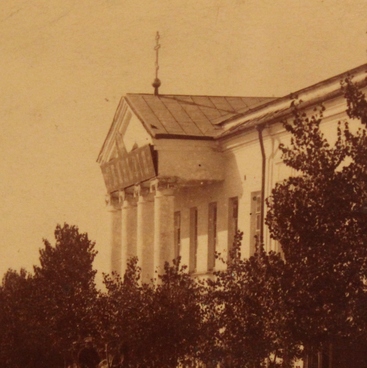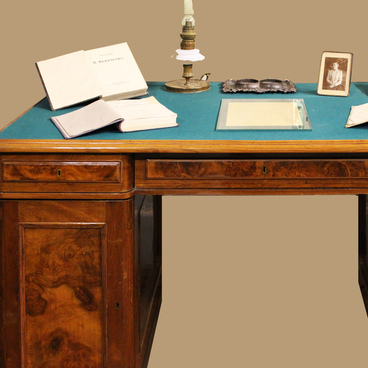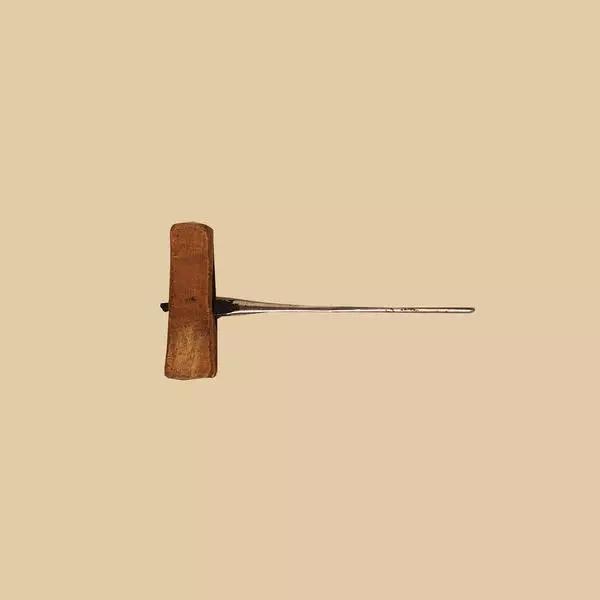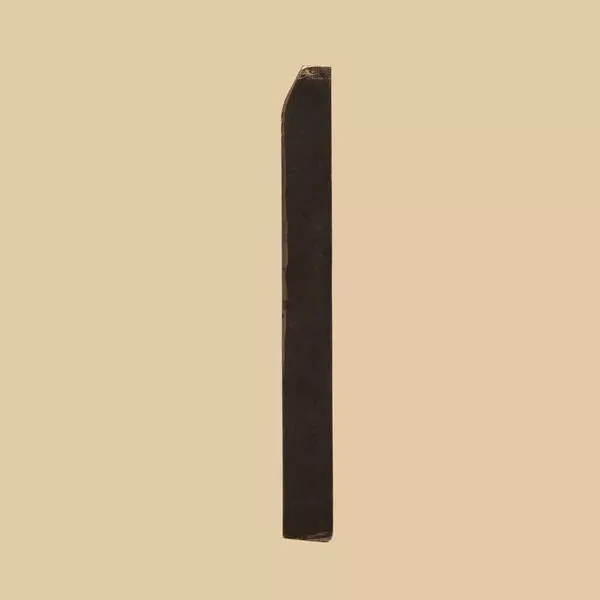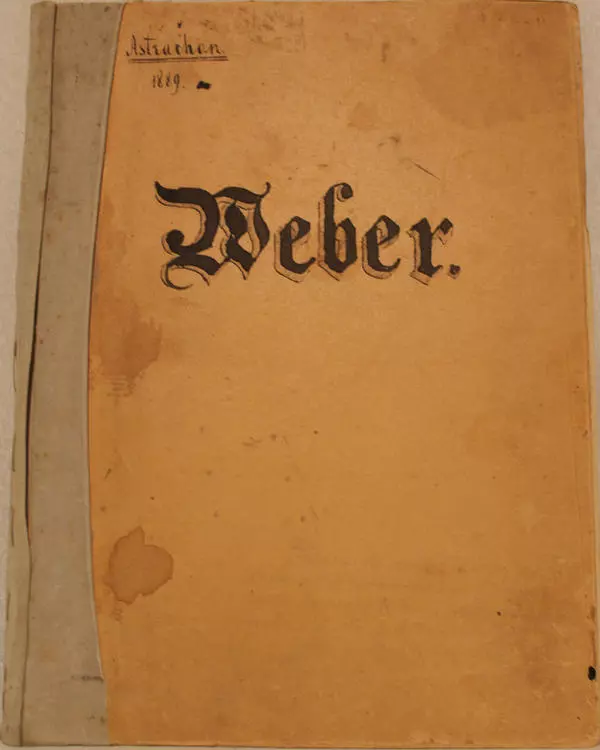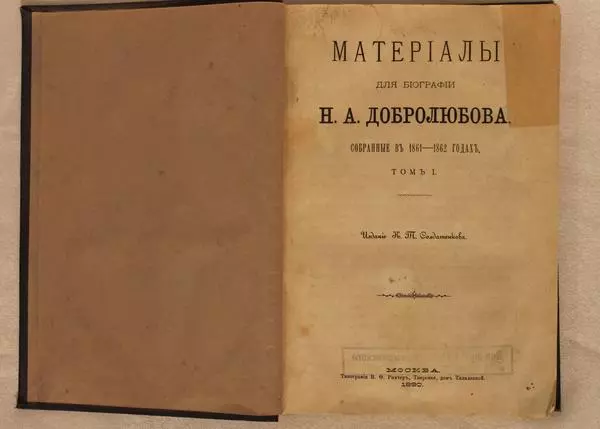Originally, Nikolay Chernyshevsky focused his academic interest on linguistic studies. At the university Chernyshevsky worked under the supervision of slavist Izmail Sreznevsky on the dictionary that would serve as a memorial to folk literature. The initial name of the dictionary survived: Linguistic Notes for a Work on the Use of Cases in the Hypatian Chronicle. In the letter to his father dated May 25, 1853, where he describes the results of his studies Nikolay Chernyshevsky wrote: ‘This is going to be the most boring and unreadable, but at the same time, nearly the most laborious of all scientific works that ever saw the light in Russia’.
As he was entering the world of journalism, Chernyshevsky was getting more and more resolved to abandon linguistics. He had an idea to write articles on aesthetics that would lay a foundation for a new dissertation. As early as in August 1853, he attempted to agree with Alexander Nikitenko on its defense. ‘On Friday, I personally handed over my future dissertation (criticism of some statements of the Hegelian Aesthetics) to Nikitenko … if I don’t have to rewrite too much for censorship reasons, I will apply for a master’s exam this week’, Chernyshevsky wrote to his father.
The exam was postponed many times, Nikitenko laid aside the material and later ‘was incessantly ill’. Chernyshevsky’s dissertation was published only on May 3, 1855, the public defense took place on May 10. Many of Chernyshevsky’s contemporaries perceived it as an outstanding social event that upset the idealistic views on literature and art and determined the main object of art as ‘the beautiful is life’.
The public defense of the dissertation took place in a small assembly hall of St. Petersburg University. Professor Alexander Nikitenko and associate professor Mikhail Sukhomlinov acted as official opponents. In the letter to his parents dated May 23, 1855, Alexander Pypin described Chernyshevsky’s answers to his opponents: “…Nicholas handled them very well. Generally, the defense was very animated, which is a rare event here”.
Minister of Education Avraam Norov is known to have abused his power to delay the issue of Chernyshevsky’s documents. The Master’s Diploma in Russian Literature was awarded to Chernyshevsky only in October 1858, after Norov’s retirement.
The Aesthetic Relation of Art to Reality edition has the owner’s black hard cover. The flyleaf contains the author’s dedicatory inscription in black ink: ‘To brother Alexander Nikolaevich Pypin’. Mikhail Chernyshevsky donated the book to the museum.
As he was entering the world of journalism, Chernyshevsky was getting more and more resolved to abandon linguistics. He had an idea to write articles on aesthetics that would lay a foundation for a new dissertation. As early as in August 1853, he attempted to agree with Alexander Nikitenko on its defense. ‘On Friday, I personally handed over my future dissertation (criticism of some statements of the Hegelian Aesthetics) to Nikitenko … if I don’t have to rewrite too much for censorship reasons, I will apply for a master’s exam this week’, Chernyshevsky wrote to his father.
The exam was postponed many times, Nikitenko laid aside the material and later ‘was incessantly ill’. Chernyshevsky’s dissertation was published only on May 3, 1855, the public defense took place on May 10. Many of Chernyshevsky’s contemporaries perceived it as an outstanding social event that upset the idealistic views on literature and art and determined the main object of art as ‘the beautiful is life’.
The public defense of the dissertation took place in a small assembly hall of St. Petersburg University. Professor Alexander Nikitenko and associate professor Mikhail Sukhomlinov acted as official opponents. In the letter to his parents dated May 23, 1855, Alexander Pypin described Chernyshevsky’s answers to his opponents: “…Nicholas handled them very well. Generally, the defense was very animated, which is a rare event here”.
Minister of Education Avraam Norov is known to have abused his power to delay the issue of Chernyshevsky’s documents. The Master’s Diploma in Russian Literature was awarded to Chernyshevsky only in October 1858, after Norov’s retirement.
The Aesthetic Relation of Art to Reality edition has the owner’s black hard cover. The flyleaf contains the author’s dedicatory inscription in black ink: ‘To brother Alexander Nikolaevich Pypin’. Mikhail Chernyshevsky donated the book to the museum.
